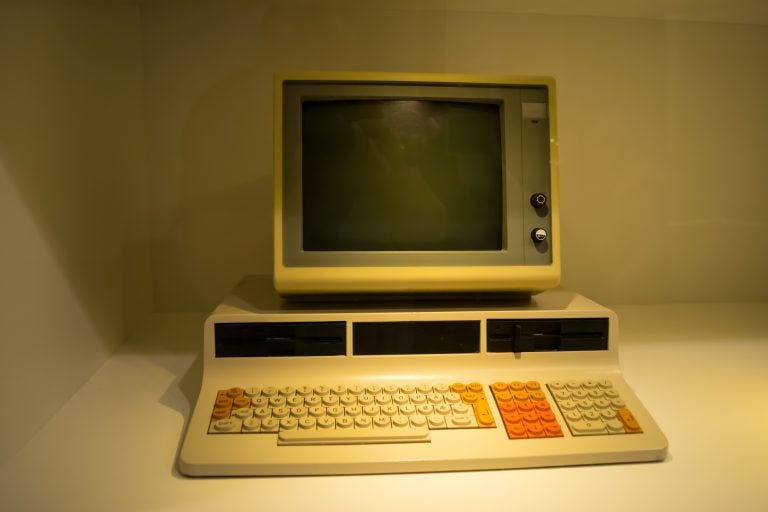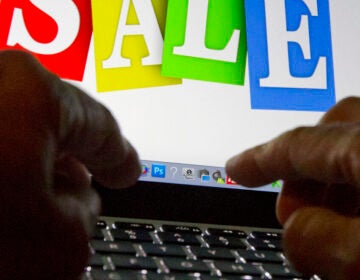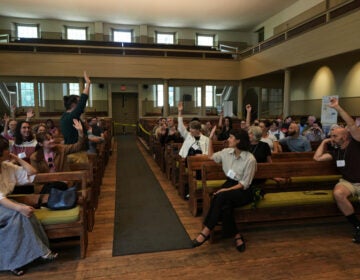West Chester professor treasures his antique computer collection
West Chester University professor Michael Pearson owns 200 computers and he's not done collecting.

(BigStock/Fredli)
Whether it’s collecting coins, stamps or computers, I love the enthusiasm of people who hoard.
Putting coins, stamps and computers in the same sentence about collecting might seem a little strange.
West Chester University professor Michael Pearson owns 200 computers and he’s not done collecting.
“It’s a labor of love,” Pearson said. “I really am excited by how quickly things change.”
Most of the professor’s computers date to pre-1981 when the IBM personal computer was introduced. IBM put almost everybody out of business except Commodore and Apple. QVC now occupies the former Commodore building in West Goshen.
With the help of students, Pearson will be opening a computer museum, “The Computer Church,” in a former church in Parkesburg.
The congregation vacated the sanctuary and left behind a wall full of the 10 Commandments and stained glass windows. Now the church is owned by a non-profit.
I am most fascinated with a U.S. Navy computer from the 20s that controlled the big guns on the U.S.S. St. Louis which survived the attack on Pearl Harbor.
No electricity was used–or tubes–this computer is a very basic manual device with gears. With the aid of this early computer, the ship’s speed and wind speed determined the angle that the big guns were programed. It was known as an mechanical analog computer.
Even with the “Rangekeeper” onboard, the success rate of hitting a target was only 12 percent. Radar eventually put this basic computer on a shelf.
Many of us remember cassette tapes and floppy disks, but there were also dozens of switches that could be manipulated to perform basic tasks on early devices. Pearson said that many of the switches caused calluses to form on fingers.
Punch cards were another way to “program” a computer. “Two thirds of all human knowledge was estimated to be stored on IBM cards by the 1960s,” Pearson said.
The professor will also display the “first” personal computer, which was introduced in 1969. Since it has handles to carry it, it was known as a personal computer. These early personal computers were heavy, back breakers.
When writing a doctoral dissertation, a professional typist was typically required to prepare the document. No typos were allowed.
Pearson did the math: 300 pages times $5 a page for the typist, with a second draft usually required after changes were requested, cost about $3,000.
Rather than pay a typist, Pearson invested $2,000 on a Zerox Mark 1 and a printer for another $2,000.
“Rather than hire the typist, I put the money into something I could keep,” he said.
“It was astounding that these machines could run these kinds of tasks,” Pearson said.
Pearson will also display the first computer controlled model house.
It’s about five feet wide. The developer of this house was looking ahead. Computers in the house unlock the doors, turn on the lights and turn the fireplace on and off. A fountain out front was even controlled by computers.
Pearson is a WCU professor in the Communications and Media Department.
He graduated from Iona College with a degree in Speech and English. He then taught in Newark, at an all boy’s Catholic high school.
He studied television production at William Patterson College and earned his PhD. from Temple University in Rhetoric.
Herman Hollerith is known as the father of the computer in the U.S. His computer, electromechanical punched card tabulator, streamlined the U.S. Census process during the 1920s. His company eventually became IBM.
Charles Babbage designed the first computer or “analytical engine” in 1834.
I can’t wait for the museum to open, likely this spring. It will surely be worth a trip to Parkesburg.
WHYY is your source for fact-based, in-depth journalism and information. As a nonprofit organization, we rely on financial support from readers like you. Please give today.




